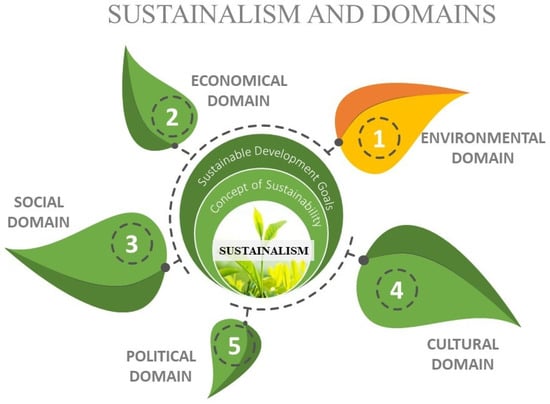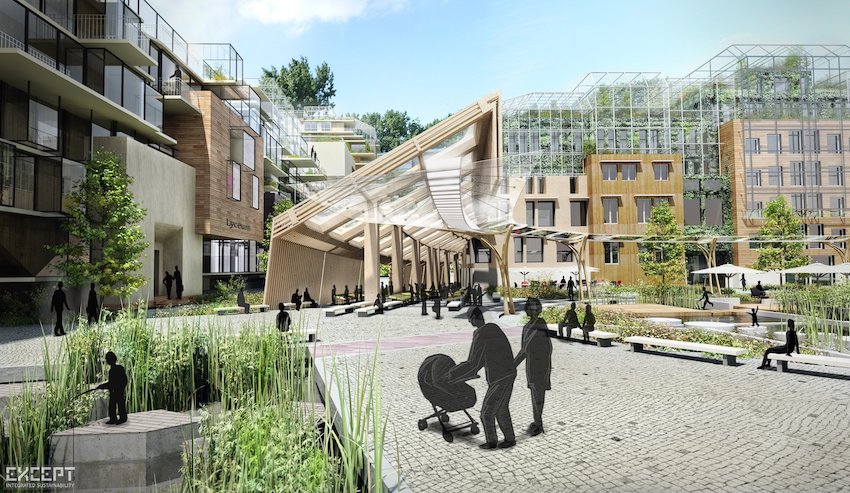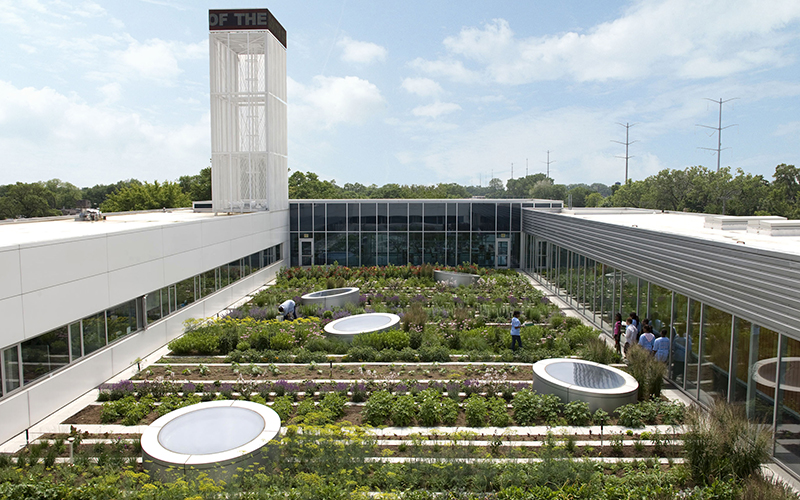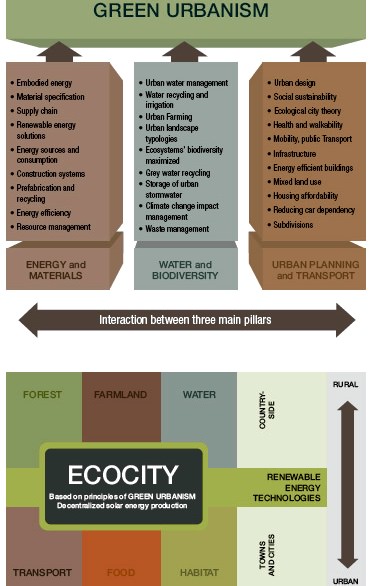Maximizing Sustainability: Low-Impact Development Policies for a Greener Future
Low-Impact Development (LID) is fundamentally transforming the approach to urban planning and environmental stewardship. By prioritizing sustainable practices, LID effectively reduces stormwater runoff, enhances water quality, supports wildlife habitats, and mitigates the urban heat island effect.
This article examines the benefits of LID, outlines its key components, and discusses effective implementation strategies. Additionally, it addresses the challenges associated with LID and highlights successful examples from various cities.
Understanding how LID can foster healthier, more resilient communities is essential for future urban development initiatives.
What are the Benefits of Low-Impact Development?
Low-impact development (LID) practices present a range of advantages that support sustainable development and effective environmental policies.
By incorporating green infrastructure into urban planning, LID practices enhance climate resilience and improve water quality. These methodologies effectively manage stormwater, minimize the ecological footprint of developments, and encourage community involvement in ecological conservation initiatives.
Consequently, LID practices contribute to the promotion of a healthier urban environment.
1. Reduces Stormwater Runoff
One of the primary advantages of low-impact development (LID) is its capacity to significantly reduce stormwater runoff through the use of permeable surfaces and features such as bioswales, which effectively manage water flow and mitigate the risks of flooding.
By incorporating these innovative techniques into urban planning, communities can enhance their resilience to extreme weather events. The integration of rain gardens, green roofs, and permeable pavement not only assists in absorbing excess rainfall but also contributes to the replenishment of groundwater supplies, thereby promoting ecological balance.
This comprehensive approach to stormwater management underscores the critical importance of natural landscapes within urban environments. Consequently, it fosters healthier ecosystems for local flora and fauna while addressing the urgent need for sustainable development.
Ultimately, these practices serve as a model for how thoughtful design can lead to safer and more adaptable communities.
2. Improves Water Quality
Low-impact development (LID) significantly improves water quality by implementing pollution prevention measures and utilizing natural drainage systems that filter contaminants prior to their entry into waterways.
By incorporating features such as green roofs, rain gardens, and permeable pavements, LID effectively reduces runoff and enhances groundwater recharge. These strategies not only mitigate the introduction of harmful pollutants into aquatic ecosystems but also foster biodiversity and promote healthier habitats for wildlife.
By promoting these ecological services, communities gain an additional layer of protection against flooding and erosion, while simultaneously ensuring the availability of clean water for public health.
Ultimately, the integration of these sustainable practices highlights the critical relationship between preserving pristine water sources and safeguarding the well-being of both the environment and the population.
3. Enhances Wildlife Habitat
By promoting habitat preservation and enhancing biodiversity, low-impact development (LID) significantly improves wildlife habitats within urban areas. This approach facilitates the creation of green spaces and habitat corridors that support a variety of species.
Such a concerted effort not only enriches the urban ecosystem but also plays a crucial role in maintaining ecological balance. Urban wildlife, often overlooked, derives substantial benefits from these practices, as they provide essential resources such as food, shelter, and breeding grounds.
Consequently, LID enables communities to foster a thriving environment where both flora and fauna can coexist, ultimately cultivating a sense of responsibility toward nature.
Furthermore, the integration of native plants rejuvenates local ecosystems, enhances air quality, and contributes to climate resilience—factors that are critical in today’s rapidly changing world.
4. Reduces Urban Heat Island Effect
Low-impact development (LID) strategies, such as the implementation of green roofs and urban forestry, effectively mitigate the urban heat island effect, thereby enhancing climate resilience and improving overall air quality in urban areas.
These innovative methods not only provide cooling benefits to the immediate environment but also facilitate stormwater infiltration, which helps alleviate flooding and supports local biodiversity. By cultivating green spaces, communities can experience numerous advantages, including a reduction in respiratory ailments attributed to improved air quality and enhanced mental well-being resulting from increased access to nature.
The integration of LID practices within urban design fosters the development of sustainable communities by promoting active lifestyles; residents are more inclined to walk or cycle in aesthetically pleasing environments.
Ultimately, the adoption of these practices presents a viable pathway toward healthier urban ecosystems while addressing the adverse impacts of climate change.
What are the Key Components of Low-Impact Development Policies?
The essential components of low-impact development (LID) policies include a range of strategies, such as green infrastructure, rainwater harvesting, permeable pavement, bioretention systems, and vegetated roofs.
These strategies are designed to promote environmental sustainability and responsible land use while facilitating collaboration among stakeholders.
1. Green Infrastructure
Green infrastructure serves as a fundamental component of low-impact development, facilitating effective stormwater management while providing ecological services that enhance urban resilience in the face of climate change challenges.
This innovative approach includes various elements such as green roofs, permeable pavements, and rain gardens, all designed to effectively capture and manage rainwater. These systems not only mitigate flooding but also improve water quality by filtering pollutants prior to their entry into waterways.
By implementing these natural strategies, urban areas can decrease their ecological footprints, promote biodiversity, and establish vibrant green spaces that enhance community well-being.
The integration of such infrastructure yields numerous benefits, including energy savings, a reduction in urban heat, and the potential increase in property values, thus presenting a mutually advantageous solution for urban planners and residents.
2. Rainwater Harvesting
Rainwater harvesting is a highly effective technique associated with low-impact development that prioritizes water conservation through the collection and storage of rainwater for various applications. This approach significantly reduces dependence on traditional water sources.
This sustainable practice not only alleviates pressure on municipal water systems but also contributes to the mitigation of runoff and flooding events, thereby enhancing environmental resilience.
By employing straightforward yet efficient collection systems, such as tanks or cisterns constructed from eco-friendly materials, individuals and communities can effectively harness natural resources.
The harvested rainwater can be utilized for:
- irrigation
- toilet flushing
- and, when properly treated, even for potable purposes, demonstrating its versatility.
The implementation of such water conservation strategies can result in substantial cost savings on water bills while promoting a heightened awareness of resource sustainability among participants.
3. Permeable Pavement
Permeable pavement is a vital element of low-impact development, as it facilitates the infiltration of stormwater into the surface, thereby promoting groundwater recharge and supporting sustainable urban planning initiatives.
This innovative material not only decreases the volume of runoff but also aids in filtering pollutants, significantly improving water quality prior to its re-entry into the ecosystem.
Its application can reduce the burden on conventional drainage systems, thereby mitigating the risks of flooding and erosion in urban areas. As communities strive to reconcile development with environmental sustainability, the integration of permeable surfaces into their infrastructure can contribute to the creation of more resilient landscapes.
Furthermore, the potential of permeable pavement to enhance green spaces and promote biodiversity renders it an attractive option within the framework of land use planning, offering cities a pathway toward more sustainable futures.
4. Bioretention
Bioretention systems play a crucial role in low-impact development by employing natural drainage mechanisms to filter stormwater. This process effectively controls pollution and enhances landscape architecture.
These systems are composed of soil, vegetation, and engineered structures that collaboratively capture and treat runoff generated from impervious surfaces, such as roads and rooftops.
By emulating natural hydrological processes, bioretention areas facilitate water infiltration while enabling the absorption and degradation of contaminants by beneficial microorganisms present in the soil. This mechanism not only helps to mitigate flooding and erosion but also reduces the influx of harmful pollutants into waterways, thereby contributing to healthier aquatic ecosystems.
Furthermore, these aesthetically pleasing landscapes promote urban biodiversity by providing habitats for various species, while also enhancing the visual appeal of urban environments.
5. Vegetated Roofs
Vegetated roofs represent a critical component of low-impact development, promoting energy efficiency, mitigating the urban heat island effect, and enhancing urban biodiversity through the incorporation of native vegetation.
Along with these benefits, vegetated roofs play a significant role in energy conservation by providing natural insulation that helps regulate indoor temperatures, thereby reducing heating and cooling costs. These systems are also effective in stormwater management, as they capture rainwater and diminish runoff, leading to improved water quality in urban environments.
Moreover, vegetated roofs function as vital green spaces, offering refuge for various wildlife species and contributing to habitat restoration efforts. Through the careful selection of plant species, these roofs not only enhance the aesthetic appeal of urban areas but also promote resilience against the impacts of climate change, ultimately making cities more adaptable and livable for future generations.
How Can Low-Impact Development Policies be Implemented?
The implementation of low-impact development (LID) policies necessitates a comprehensive approach that encompasses effective policy execution by local governments, public education initiatives, and collaboration with stakeholders.
This collaborative effort is essential for ensuring community engagement and facilitating environmental monitoring.
1. Local Government Regulations and Incentives
Local governments play a vital role in the implementation of low-impact development (LID) by establishing regulations and incentives that promote sustainable practices and support zoning regulations conducive to LID.
By adopting comprehensive regulatory frameworks, local governments can facilitate green infrastructure initiatives that prioritize environmental protection while also promoting social equity and economic viability.
These frameworks may include incentives for developers who prioritize eco-friendly designs, such as:
- Tax credits
- Streamlined permitting processes
- Reduced fees for projects that incorporate sustainable materials and practices
Additionally, local governments can implement community planning policies that integrate urban green spaces, enhance stormwater management, and promote alternative transportation options. Such collaborative strategies not only mitigate environmental impacts but also foster resilient communities that are better equipped to adapt to the challenges posed by climate change.
2. Public Education and Outreach
Public education and outreach are vital components in promoting low-impact development, as they foster community engagement and raise awareness regarding environmental justice and best management practices.
The significance of education in this process is profound; informed communities are more capable of advocating for sustainable practices that safeguard local ecosystems. To enhance these efforts, targeted strategies such as workshops, informational sessions, and hands-on community projects can be implemented, enabling residents to actively participate in the development process.
Collaboration with local schools, civic organizations, and government entities further strengthens outreach initiatives, ensuring that a diverse range of perspectives is taken into account. By emphasizing the interconnectedness of healthy environments and quality of life, these initiatives can inspire individuals to not only comprehend but also contribute to low-impact development solutions that benefit the entire community.
3. Collaboration with Developers and Builders
Collaboration with developers and builders is essential for the successful implementation of low-impact development, as it ensures the integration of site design and sustainable landscaping practices into new projects.
By fostering partnerships among various stakeholders, including urban planners, environmental consultants, and community members, the potential for innovative solutions to emerge is significantly increased. This collaborative approach promotes the exchange of ideas and best practices, ultimately resulting in designs that are both functional and environmentally responsible.
When all parties actively participate in the planning process, they can identify common objectives, address potential challenges at an early stage, and formulate strategies that support efficient water management, native vegetation, and habitat preservation.
Such cooperative efforts are vital in creating spaces that reduce ecological footprints while effectively addressing the needs of the community.
4. Partnerships with Non-Profit Organizations
Establishing partnerships with non-profit organizations significantly enhances low-impact development efforts by effectively leveraging resources for community development and environmental restoration projects.
These collaborations frequently lead to innovative solutions that address local ecological challenges while promoting a sense of community ownership and engagement. Non-profit organizations typically possess valuable insights into regional needs and maintain extensive volunteer networks, facilitating more effective outreach and education initiatives.
By combining expertise and financial resources, these alliances can raise awareness about sustainable practices and contribute to the enhancement of healthier ecosystems.
Furthermore, partnerships with non-profits often attract additional funding sources and support from both the private and public sectors, thereby amplifying the impact of low-impact development initiatives on communities and their natural resources.
What are the Challenges of Implementing Low-Impact Development Policies?
Despite the advantages associated with low-impact development (LID), several challenges require attention.
These challenges include:
- the costs associated with implementation,
- the need to secure funding,
- the importance of raising awareness among stakeholders,
- and the necessity of overcoming resistance from traditional developers.
1. Cost and Funding
The cost associated with the implementation of low-impact development (LID) practices can serve as a significant barrier, necessitating the establishment of effective funding strategies and demonstrating economic benefits to render these solutions more accessible for communities.
To effectively address these challenges, communities frequently investigate a variety of funding sources, including state and federal grants, public-private partnerships, and local taxation mechanisms designed to generate the necessary capital for such projects.
The long-term economic benefits of LID, which encompass reduced stormwater management costs, increased property values, and enhanced community resilience against climate change, can substantially offset initial expenditures.
By prioritizing budget considerations and capitalizing on these funding opportunities, municipalities can not only address environmental concerns but also promote sustainable economic growth that is advantageous for both residents and businesses.
2. Lack of Awareness and Education
A lack of awareness and education regarding low-impact development can significantly impede its implementation, making community engagement and environmental stewardship essential for disseminating knowledge and best practices.
In the absence of a solid understanding, individuals and communities may resist the adoption of low-impact development strategies, often stemming from misconceptions or unfamiliarity with their benefits. Engaging the public through workshops, informative seminars, and hands-on demonstrations can cultivate a deeper appreciation for these sustainable practices.
By leveraging social media platforms and local events, advocates can effectively share success stories and underscore the positive impacts on water quality, biodiversity, and urban resilience.
Collaboration with local schools and organizations can enable future generations to prioritize environmental stewardship and advocate for the adoption of low-impact development, thereby ensuring a sustained commitment to sustainable practices within the community.
3. Resistance from Traditional Developers
Resistance from traditional developers frequently presents a challenge to the implementation of low-impact development (LID) policies, as they may be hesitant to embrace innovative practices that diverge from conventional methodologies.
This reluctance can arise from a variety of factors, including perceived costs, a lack of familiarity with LID techniques, and concerns regarding the feasibility and effectiveness of new approaches. Many developers are apprehensive that these practices could complicate project timelines or elevate costs without guaranteeing the expected benefits.
To promote the acceptance of LID strategies, it is essential to focus on education and the provision of incentives. Engaging developers through workshops that highlight successful case studies and the long-term financial advantages of LID can effectively address their concerns.
Furthermore, fostering partnerships with local governments can create supportive frameworks that encourage the incorporation of environmentally sustainable practices into their projects.
What are Some Successful Examples of Low-Impact Development Policies?
There are numerous successful examples of low-impact development policies in various cities that have effectively implemented innovative strategies to promote sustainability, enhance community planning, and comply with environmental regulations.
1. Portland, Oregon
Portland, Oregon, serves as a leader in low-impact development, effectively integrating comprehensive green infrastructure practices within its urban planning framework to manage stormwater and promote environmental sustainability.
Through the implementation of innovative strategies such as green roofs, permeable pavements, and rain gardens, the city has significantly diminished surface runoff while fostering biodiversity. These initiatives not only alleviate flooding risks but also enhance water quality, contributing to healthier ecosystems.
Community engagement has been a crucial component of Portland’s strategy, with residents actively involved in the planning and maintenance of green spaces.
The successful incorporation of these elements has transformed urban areas into more attractive and livable spaces, cultivating a strong sense of community pride and enhancing property values.
As Portland continues to exemplify best practices in sustainable urban development, other cities look to its successful model for guidance and inspiration.
2. Seattle, Washington
Seattle, Washington, has implemented low-impact development policies through innovative water conservation strategies, thereby fostering community engagement and promoting sustainable urban practices.
These initiatives have transformed neighborhoods into vibrant ecosystems by integrating green infrastructure, such as rain gardens and permeable pavements, which mitigate stormwater runoff and enhance local biodiversity.
Community members have played a vital role in these developments, actively participating in workshops and volunteer projects that not only educate residents about sustainable practices but also cultivate a strong sense of ownership over their environment.
As a result, Seattle has observed significant improvements in water quality within its waterways, illustrating the essential connection between community involvement and effective urban ecological solutions.
This collaborative approach exemplifies how cities can enhance their resilience to the challenges posed by climate change.
3. Philadelphia, Pennsylvania
In Philadelphia, Pennsylvania, the integration of green infrastructure into low-impact development has significantly transformed stormwater management and enhanced community planning initiatives across the city.
This approach has not only provided innovative solutions to the challenges associated with heavy rainfall and flooding but has also promoted urban ecosystem sustainability by improving air quality and enhancing biodiversity.
As various stakeholders collaborated to implement these green technologies—such as green roofs, rain gardens, and permeable pavements—they encountered several challenges, including funding limitations and the need for increased public awareness.
Despite these obstacles, the advancements achieved have resulted in cleaner waterways and revitalized neighborhoods, illustrating the potential of low-impact development to foster resilient urban environments that benefit both residents and the ecosystem.
4. Austin, Texas
Austin, Texas, has successfully implemented low-impact development strategies that are in alignment with environmental policies focused on flood mitigation and sustainable urban growth.
By prioritizing techniques such as rain gardens, permeable pavements, and green roofs, the city enhances its resilience against stormwater runoff while also contributing to improved air quality and urban biodiversity.
These initiatives not only address environmental concerns but also foster a sense of community by encouraging local participation in environmental stewardship and creating green spaces that benefit residents.
The integration of these practices demonstrates a commitment to balancing development needs with ecological preservation, ensuring that future generations can enjoy a vibrant and sustainable Austin.
Additionally, public awareness and education campaigns further amplify the impact of these efforts, promoting a culture of sustainability that resonates deeply within the community.
5. Vancouver, British Columbia
Vancouver, British Columbia, is recognized for its exemplary low-impact development practices that prioritize ecological balance and climate resilience, positioning itself as a model for other municipalities.
These innovative strategies incorporate elements such as green roofs, permeable pavements, and rain gardens, which serve the dual purpose of filtering stormwater and enhancing urban biodiversity. By effectively managing water runoff and mitigating urban heat, these practices contribute to a healthier ecosystem and foster community engagement.
Furthermore, the integration of urban forestry and community gardens strengthens food security while offering green spaces for recreation and relaxation. The successful implementation of these strategies underscores the city’s commitment to sustainability and serves as an inspiration for collective action toward environmental stewardship.
Frequently Asked Questions
What are Low-Impact Development Policies?
Low-Impact Development Policies are a set of regulations and guidelines that aim to minimize the impact of development projects on the environment, specifically on water resources and natural habitats. These policies encourage the use of sustainable practices and techniques to manage stormwater runoff, reduce pollution, and preserve natural resources.
What is the purpose of implementing Low-Impact Development Policies?
The main purpose of implementing Low-Impact Development Policies is to promote environmentally-friendly development practices that protect and preserve the natural environment. These policies aim to mitigate the negative impacts of urbanization on water resources, wildlife habitats, and overall ecosystem health.
What are some common components of Low-Impact Development Policies?
Some common components of Low-Impact Development Policies include requirements for green infrastructure, such as rain gardens and permeable pavements, to manage stormwater runoff. These policies may also mandate the use of native plants and landscaping techniques that promote natural filtration and reduce the need for irrigation and fertilizers.
How do Low-Impact Development Policies benefit communities?
Low-Impact Development Policies offer numerous benefits to communities, including improved water quality, reduced flood risks, and increased biodiversity. These policies also promote a more sustainable and resilient approach to development, ensuring that communities can continue to thrive without degrading their natural surroundings.
What are some challenges in implementing Low-Impact Development Policies?
One of the main challenges in implementing Low-Impact Development Policies is the initial cost and potential resistance from developers and property owners. However, in the long run, these policies can actually save money by reducing the need for costly infrastructure and maintenance. Additionally, it may take time for communities to adapt to new regulations and incorporate sustainable practices into their development projects.
How can individuals support Low-Impact Development Policies?
Individuals can support Low-Impact Development Policies by educating themselves about these regulations and advocating for their implementation in their communities. They can also practice sustainable habits, such as conserving water and using native plants in their own landscaping, to contribute to the overall goals of these policies.

I’m Bruno, an architect with a deep passion for Biophilic Design in Urban Architecture. Throughout my career, I’ve focused on integrating natural elements into urban planning, and I created this site to share my insights and foster a deeper understanding of how biophilic principles can significantly enhance urban living. Dedicated to sustainable development, I continually explore innovative design solutions that promote both environmental and human well-being in city landscapes.














Publicar comentário